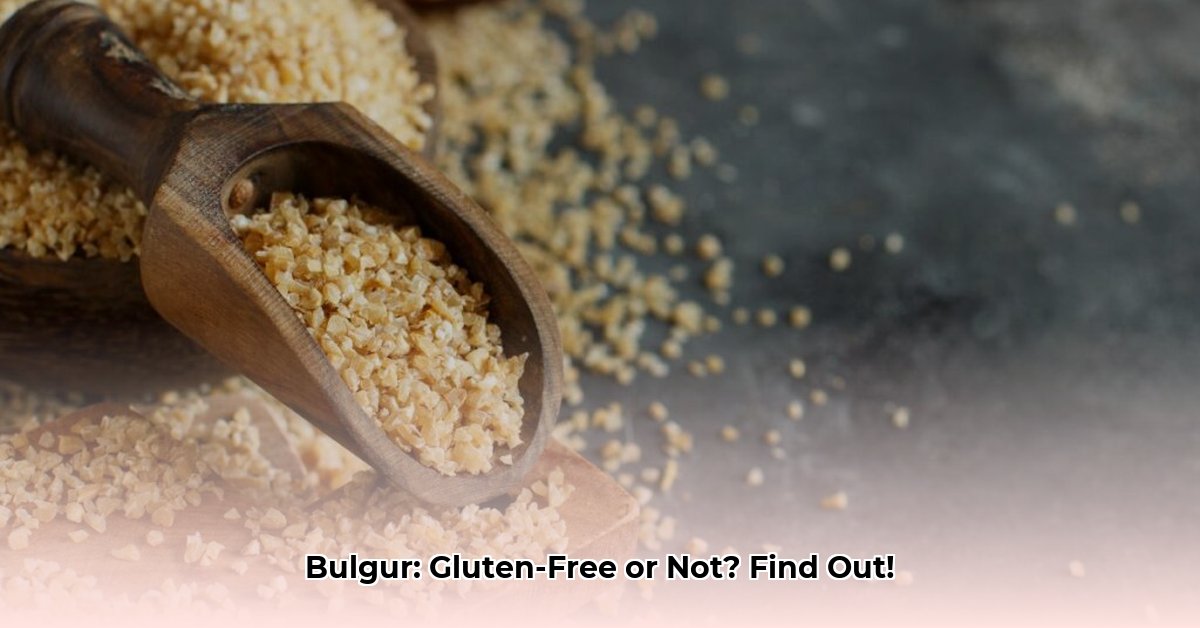No, bulgur is not gluten-free.
Why Bulgur Isn’t Gluten-Free
Bulgur is made from cracked wheat kernels, typically durum wheat. Since wheat contains gluten, so does bulgur. This makes it unsuitable for individuals with celiac disease or gluten sensitivity. Even small amounts of gluten can trigger adverse reactions in these individuals.
What is Gluten and Why Does it Matter?
Gluten is a protein found in wheat, barley, and rye. For people with celiac disease, gluten triggers an autoimmune response that damages the small intestine. Those with non-celiac gluten sensitivity may also experience a range of symptoms after consuming gluten, though the underlying mechanism is different and doesn’t involve intestinal damage. Symptoms can include digestive issues (bloating, gas, diarrhea), fatigue, headaches, and skin rashes. Some research suggests gluten may play a role in other conditions, but more studies are needed.
What Happens if You Eat Bulgur on a Gluten-Free Diet?
If you have celiac disease or non-celiac gluten sensitivity, eating bulgur can lead to a variety of symptoms, ranging from mild digestive discomfort (bloating, gas, abdominal pain) to more severe reactions. In individuals with celiac disease, continued gluten consumption can cause long-term health complications. If you experience any symptoms after consuming bulgur or suspect you’ve been exposed to gluten, it’s best to consult your doctor or a registered dietitian.
Delicious Gluten-Free Alternatives to Bulgur
Fortunately, many delicious and nutritious gluten-free alternatives can provide similar textures and nutritional benefits as bulgur.
- Quinoa: This complete protein is packed with fiber and has a light, fluffy texture. It’s excellent in salads, grain bowls, and as a side dish. It’s a popular substitute for bulgur in recipes like tabbouleh.
- Brown Rice: A budget-friendly whole grain rich in fiber and magnesium. While it takes longer to cook than bulgur, its neutral flavor makes it versatile for various dishes.
- Millet: These small, round grains have a mild, slightly sweet flavor and are rich in magnesium and antioxidants. Try them in porridge, baked goods, or pilafs.
- Buckwheat: Despite its name, buckwheat is not related to wheat and is gluten-free. It has a distinct earthy flavor and is rich in fiber and magnesium. It’s great in pancakes, crepes, or as a hot cereal. Toasting buckwheat groats can enhance their nutty flavor.
- Amaranth: An ancient grain with a slightly peppery taste and creamy texture when cooked. Amaranth is excellent in porridge, adds a unique texture to salads, and can be used as a thickening agent in soups and stews.
- Cauliflower Rice: While not a grain, finely chopped cauliflower can mimic the texture of bulgur in some dishes, particularly salads. It’s a low-carb, high-fiber alternative.
Comparing Bulgur and Gluten-Free Alternatives
| Grain | Gluten-Free | Approximate Cooking Time | Flavor Profile | Suggested Uses |
|---|---|---|---|---|
| Bulgur | No | 10-15 minutes | Nutty, Earthy | Salads, Pilafs, Stuffing |
| Quinoa | Yes | 15-20 minutes | Nutty, Delicate | Salads, Bowls, Side Dishes |
| Brown Rice | Yes | 40-45 minutes | Mild, Nutty | Side Dishes, Bowls, Casseroles |
| Millet | Yes | 20-25 minutes | Mild, Slightly Sweet | Porridge, Bowls, Breads |
| Buckwheat | Yes | 15-20 minutes | Earthy, Robust | Pancakes, Crepes, Hot Cereal |
| Amaranth | Yes | 20-25 minutes | Peppery, Creamy | Porridge, Salads, Thickening Agent |
| Cauliflower Rice | Yes | 5-7 minutes | Mild, slightly sweet | Salads, stir-fries, as a rice substitute |
Adapting Recipes: Swapping Bulgur for Gluten-Free Options
Substituting bulgur in recipes is usually straightforward. For example, quinoa works well in tabbouleh, while brown rice or a mix of millet and buckwheat can replace bulgur in heartier dishes like kibbeh. Slight adjustments to cooking times or liquid ratios might be necessary depending on the specific recipe and chosen alternative.
Cross-Contamination: A Critical Consideration
Even with gluten-free ingredients, cross-contamination can occur if gluten-containing foods come into contact with gluten-free food prep surfaces, utensils, or storage containers. This is especially crucial for those with celiac disease, who can have reactions from trace amounts of gluten. Dedicate separate cutting boards, utensils, and cooking areas for gluten-free foods to minimize this risk.
Disclaimer: This information is for educational purposes only and does not constitute medical advice. Consult with a qualified healthcare professional for any health concerns or before making any decisions related to your health or treatment.
- What Types Of Jobs Does Wind Energy Create? - November 23, 2025
- Residential Wind Energy: Powering Homes with Small Turbines - November 21, 2025
- How Did Charles F. Brush Discover Wind Energy Tech? - November 19, 2025
















